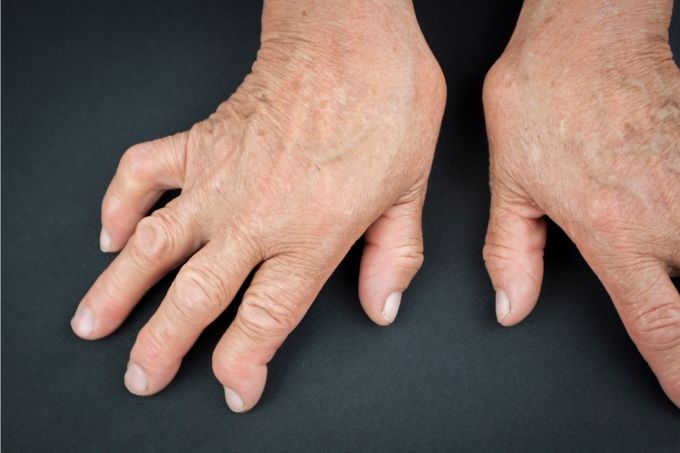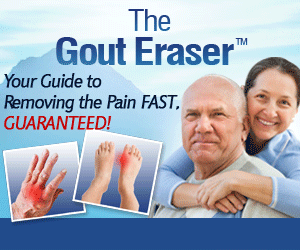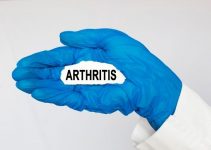
Arthritis is a condition that affects one or more joints. The condition may affect any joint in several body areas, including the hands. A joint is a point at which two bones meet. Arthritis in the hands results in pain, inflammation, swelling, tenderness, and stiffness with a lessened range of motion. The hand is prone to developing arthritis mainly because it contains many joints. The main one is the wrist, and the other joints are the ones that form the fingers. Below, we discuss all that you need to know about hand arthritis.
Different types of arthritis that affect the hands
1. Osteoarthritis
Osteoarthritis is the degenerative kind, and it is primarily caused by joint wear and tear. It causes the articular cartilage to wear away. Any healthy joint effortlessly moves due to a smooth and slippery connective tissue referred to as articular cartilage.
This cartilage covers bone ends and provides cushioning for joints. It helps prevent them from friction as they move or glide. The synovial fluid provides the articular cartilage with lubrication. This oil-like fluid is produced by the synovium, which is typically a joint lining.
2. Rheumatoid arthritis
Rheumatoid arthritis is the type of arthritis that is mainly caused by joint inflammation. Both of these kinds of arthritis may affect the hand. Rheumatoid arthritis is chronic and causes the synovium to swell. It typically begins in small joints and affects similar joints bilaterally.
3. Psoriatic arthritis
Psoriatic arthritis affects the skin, and it may affect the fingers. Gout is another inflammatory arthritis that may affect the hand. It is caused by high amounts of uric acid in the blood.
Suggested article: What Are the First Signs of Psoriatic Arthritis? – 11 Symptoms
Causes of hand arthritis
The term arthritis collectively refers to more than a hundred conditions and it may be inflammatory or mechanical. Arthritis that affects the hand or wrist may have more than one cause. It may result due to trauma. An injury over time may also cause hand arthritis. Fractures that damage joint surfaces and dislocations may also cause the development of arthritis. Post-traumatic arthritis is a kind of osteoarthritis.
Other risk factors for hand arthritis are;
- Age: after the age of fifty, you are at a more considerable risk of osteoarthritis. If you are between 35-50, you may develop rheumatoid arthritis.
- Being a woman.
- Obesity and being overweight: the extra strain put on the joints may cause arthritis.
- Genetics: if you inherit genes that cause arthritis.
- Being a smoker.
- Having a job that puts repeated or excessive stress on the hand.
Parts of the hand affected by arthritis
Arthritis in hands may affect:
- The wrist.
- Fingers, the middle and top joints.
- Knuckles.
- The base of the thumb where it joins the wrist.
The hand and wrist are responsible for a lot of daily activities. These activities may be challenging to perform when they are affected by arthritis, and daily living can become a challenge.
If arthritis of the hand goes untreated for a significant amount of time, it may deform the bones that form a joint. This results in more pain and may go further to limit motion. Inactivity is among the most significant risks associated with any form of arthritis.

Symptoms and signs of arthritis in hands
- Pain– One of the early symptoms is joint pain that feels dull or one with a burning sensation. It will often occur after progressive and increased joint use. It may not be immediately present but may manifest hours later or even the following day. Pain is typical in the morning and maybe accompanied by stiffness. Most people will complain of increased pain when it rains. Easy activities may become difficult to carry out.
- Swelling– if the affected joint is subjected to more stress than what it can handle, it may swell in an attempt to prevent further use.
- Alterations in the surrounding joints– For those with advanced hand arthritis, especially at the base of the thumb, neighboring joints can become more mobile than usually. A deformity may cause a joint closer to the affected joint to move more to compensate for the arthritic one.
- A warm sensation– the affected joint may feel warm when touched. This is because of the body’s response to inflammation.
- Cysts– if hand arthritis affects the finger end joints, small cysts may form. They may then bring about dents or ridges in the affected finger’s nail plate.
- Looseness and crepitation– the affected joint suffers a grating or grinding sensation. This comes about due to the rubbing of damaged articular cartilage surfaces against each other. If damaged ligaments cause hand arthritis, the affected joint’s supportive structures may become loose or unstable.
Suggested article: What Does Arthritis Feel Like? – Arthritis Symptoms
Diagnosis
To diagnose hand arthritis, the doctor or joint specialist will primarily inquire about your symptoms. They will also try to find out how the pain impacts your daily life. For a more accurate diagnosis, they may perform specific physical exams- assessing joint mobility, motion range, and checking for tenderness. Additionally, they may evaluate your overall health to find out if another condition is the cause of your symptoms.
For a more accurate diagnosis, they may examine the hand using an X-ray, ultrasound, or MRI. A bone scan may help, especially where the arthritis is in its early stages. Blood tests do not directly help diagnose arthritis. However, a doctor can order a blood test for several reasons. For example, to rule out rheumatoid or psoriatic arthritis. The test checks for immune markers and inflammation. It may indicate factors such as; the rheumatoid factor, the C-reactive protein, antinuclear antibodies, etc. A doctor may do a blood test or a joint fluid test to test for gout.
Treatment
Those who suffer from hand arthritis can embark on treatment early, soon enough after diagnosis. This will prevent the worsening of the condition, and it can also facilitate the process of going back to normal activities. Treatment options are determined by;
- The intensity of progression.
- The number of joints involved.
- Age, medical conditions, and level of activity.
- If it is the dominant or non-dominant that is affected.
- Individual goals, the ability to comprehend treatment, and compliance with a therapy program.
Non-surgical Options
- Medications: Mostly, medications work to improve symptoms. They do not reverse joint damage, nor do they restore the articular cartilage. The most common types used are anti-inflammatory- they stop or prevent the body from producing particular chemicals that cause pain and swelling, for example, ibuprofen and naproxen.
Medication to slow the progression of rheumatoid arthritis or disease-modifying antirheumatic drugs may be administered. They include; leflunomide, methotrexate, and hydroxychloroquine sulfasalazine.
- Injections– injections may be used for treatment, especially where anti-inflammatory drugs are deemed inappropriate. These injections typically contain a steroid and a long-lasting anesthetic that offer pain relief for more extended periods, weeks to several months. They can be repetitive, but they will generally be limited to a specific number of times. This is because they may have potential side effects and infection.
- The use of splints– splints can be used together with injections. They help support an affected joint and relieve it from any stress that comes with activity and usage. Splints should be worn when the joints hurt. They need to be of a suitable size to allow for hand function when worn. They also should not be worn for too long since they cause atrophy or muscle deterioration. Muscles can help stabilize injured joints, and therefore it is always crucial to prevent atrophy.
- Heat and cold therapy– alternating heat and cold packs are effective for pain relief. Heat therapy is also best in the morning for loosening the joint. Cold therapy is best for later in the day after hand activity.
- Physical therapy– patients may work with hand therapists to perform hand exercises that keep ligaments and tendons more flexible. They will assist maintain motion range. The exercises can also help strengthen hand muscles.
Suggested article: How To Prevent Arthritis? – 7 Ways to Prevent Arthritis
Surgical Options
When non-surgical options fail to offer relief, surgery is considered an option and discussed. There are several surgical interventions, but the chosen surgical treatment should have a reasonable chance of providing long-term relief. It should also be one that can help the patient’s hand return to normal function. More importantly, it should be tailored to the patient’s needs.
An option that can preserve or reconstruct the affected joint is usually settled on. With damage that has progressed to cause no function, a joint fusion or replacement is done. Joint fusion completely stops joint motion, but there are no symptoms or pain afterwards. Joint replacement is more suited for offering pain relief and restoring function. Most hand and wrist joints are replaceable.
Final Thoughts
Different forms of arthritis may affect the hand. With arthritis in hands, symptoms may be evident on any hand joint. Therefore, if you notice any of the symptoms mentioned above, you need to seek medical attention. It could be a sign of hand arthritis. It may not be possible to cure arthritis that affects the hand(s), but early treatment can help offer relief and prevent the condition from causing long-term impacts.
Suggested articles:
– Top 12 Foods to Avoid with Arthritis – The ULTIMATE List
– How To Prevent Arthritis In Knees – Info and Prevention
– Rheumatoid Arthritis Nodules – Risk Factors, Diagnosis, Treatment
– 7 Exercises for Arthritis in Hands – Reduce Your Pain Naturally
– Reflexology for Arthritis – Is Reflexology Good for Arthritis?
– Arthritis vs Arthralgia – What is the Difference?
– Pisotriquetral Arthritis – Causes, Symptoms and Treatment
The Gout Eraser™: The all-natural guide for permanent gout removal
The Gout Eraser™ is a short, to the point guide on how to reverse gout symptoms without ever leaving your home. The guide goes into extensive detail on exactly what you need to do to safely, effectively and permanently get rid of gout, and you are GUARANTEED to see dramatic improvements in days if not hours.
To learn more about The Gout Eraser™ system, check out the following free video presentation: The Gout Eraser™





